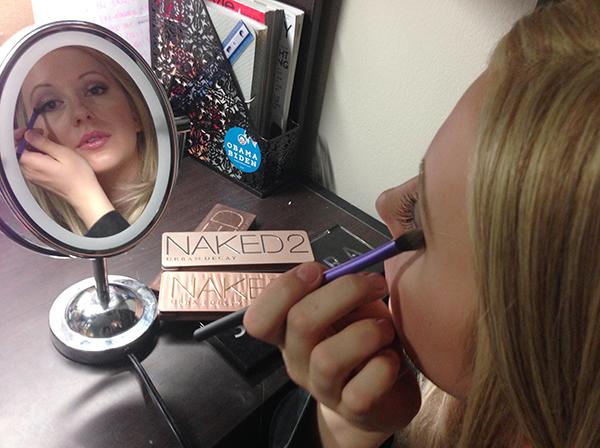Makeup Mavericks: SESP sophomore Jessica Arnold
May 8, 2014
Some days it seems like you barely have enough time in your schedule to shower before class, let alone put together the perfect look. But amazingly, Northwestern is filled with students who manage to look flawless — even with five midterms a week and a thousand extracurriculars. Each week, I’ll talk to someone on campus and get her makeup tips and tricks. This week, I talked to SESP sophomore Jessica Arnold, who talked about types of eye shadows and their uses.
Smoky eye at night and a light color during day can be the spectrum of eye shadow for most, but there is more to eye makeup than just these two looks. Arnold gives some advice on how to mix up colors and expand your eye makeup expertise.
Mix it up
When mixing colors, Arnold distinguishes between two types of shadows, matte and shimmery. Used individually these have a different purpose. Shimmery eye shadows are used in small amounts and are for catching the light on the eyes. Matte shadows, on the other hand, are used to “contour” and have a more natural look because no one’s eyes actually glitter, even if your significant other says your eyes sparkle.
When you mix these two types, you get a color duo that ups your look immensely. In general, Arnold likes to mix natural colors because they mostly all go together. If using a bright shade, she will use one matte shadow as an accent and just alter the color intensity across the eye.
Jessica’s Tip: “(Mixing shadows) gives a kind of different texture in that you have your matte eye shadows and shimmery eye shadows. You’re kind of limited if you just stick to one or the other, but when you mix them, you make a different look or feel.”
The application process
Whether using a light or dark shadow the process is the same. Arnold explains that the darker, matte shadows always go on the outer corner of the eye and get lighter as you move toward the center of the lid, getting a wide-eyed look. The matte shade is mostly to contour the crease and enhance the eye shape.
On the inner corner is where you use the shimmery or lightest shadow. Also, applying this color to the brow bone further highlights the eyes. A color that Arnold likes to use when highlighting is a light pink, but any white or light silver can do the trick.
Jessica’s Tip: “To make your eyelids stand out or your eyes look bigger, contour in your crease. Using a brush, get a darker shade and almost use (the brush) like windshield wiper motion.”
Blend it out
After applying your matte and shimmery shades, it is important to blend them or else you have splotches of color, and that’s just, well, no.
Jessica’s Tip: “I think a blending brush is the most important thing to have because really the key to having any sort of natural eye shadow look is to blend it out where it doesn’t have any harsh lines.”
Try something new
Arnold has been experimenting with colored eyeliner or eye crayons on her bottom waterline. For her, this is a different way to add a hint of bright color that might be too strong to apply on the eyelid.
Jessica’s Tip: “It’s just adds a subtle color to (the eye). So it’s not too dramatic, stick to just the bottom, and then add brown or black liner on top.”
Know someone with a great makeup look or have your own tips to share? Email me at [email protected].


